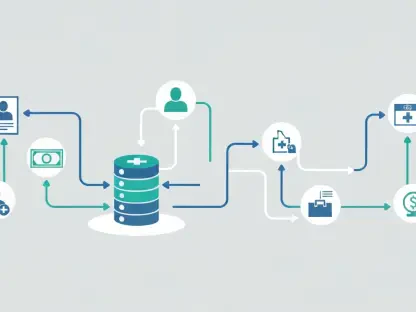Quantum cryptography is revolutionizing secure communication by employing the principles of quantum mechanics to create encryption methods that are virtually unbreakable. This cutting-edge field has recently seen significant advancements thanks to the efforts of Dr. Norbert Lütkenhaus and his research team at the University of Waterloo. Their latest contribution is a new open-source software package designed to accurately model Quantum Key Distribution (QKD) protocols. This development marks a substantial leap in both academic research and practical application in the realm of quantum cryptography. By bridging the gap between theoretical models and experimental data, the software paves the way for more reliable and efficient quantum communication systems.
Bridging Theory and Practice in Quantum Cryptography
The new software package represents a significant milestone in aligning theoretical QKD research with experimental and practical implementations. One of the considerable challenges in the realm of quantum cryptography has been to ensure that complex theoretical models can be seamlessly translated into real-world applications. This software addresses this critical gap by enabling the simulation of realistic QKD scenarios, which is paramount for accurate experimental validation and optimization of key distribution rates. Successfully bridging this divide is essential for advancing the security of communications and safeguarding sensitive information against the potential threats posed by quantum computing.
Moreover, the open-source nature of the software fosters a collaborative environment among researchers worldwide. By providing a common platform, the software facilitates contributions, modifications, and improvements from a global network of experts. This communal effort not only accelerates innovation but also refines QKD protocols to better meet the rapidly evolving needs and demands of quantum cryptography. Such interdisciplinary collaboration is crucial for the continuous advancement of the field, emphasizing the necessity of collective expertise to tackle complex scientific challenges.
Real-world applications of QKD demand models that can account for various environmental variables and practical limitations. The software enables researchers to generate realistic simulations that include factors like noise and loss, essential for effective key distribution. By offering accurate models, the tool aids in the improvement of experimental setups, leading to more efficient and secure quantum communication systems. This direct alignment between theoretical projections and empirical data underscores the software’s pivotal role in pushing the boundaries of what’s possible in quantum cryptography.
Modular Design for Enhanced Usability and Education
A standout feature of the newly developed software is its modular design, which breaks down the complex task of QKD modeling into smaller, manageable components. This approach not only enhances the overall usability of the software but also provides a robust educational framework that benefits both seasoned professionals and novice researchers alike. Each module focuses on a specific aspect of QKD modeling, such as optical modeling, security analysis, or optimization theory. By isolating these components, specialists can concentrate on areas within their expertise, resulting in more precise and efficient solutions.
This modular structure is particularly advantageous for educational purposes. Undergraduate and graduate students can engage with individual sections of the software, gaining a deeper understanding of the various facets of quantum cryptography while actively contributing to the broader research community. Such hands-on experience is invaluable for training the next generation of quantum scientists and engineers, offering them a practical avenue to apply theoretical knowledge. Additionally, the modular design allows for swift updates and improvements, fostering continuous innovation without the need for an entire system overhaul.
Furthermore, the modularity of the software makes it an excellent tool for interdisciplinary collaboration. Researchers from different fields can work on distinct modules, integrating their specialized knowledge into the comprehensive QKD models. This collective approach not only expedites the research process but also ensures that the developed solutions are both robust and well-rounded. By facilitating contributions from a diverse range of experts, the software encourages a multidisciplinary perspective that is essential for solving the complex challenges inherent in quantum cryptography.
Optimized User Experience and Real-World Application
The latest iteration of the software, an update from its initial 2021 release, has been meticulously optimized to enhance the user experience. New features include added checks and validations that ensure users input realistic values, effectively reducing the likelihood of meaningless or erroneous outputs. This user-centric approach significantly broadens the software’s accessibility, making it a valuable tool for a diverse range of researchers with varying levels of expertise in quantum cryptography.
From a practical standpoint, the software facilitates the improvement of experimental key rates, which are critical for the implementation of QKD. Through accurate models and simulations, researchers can better comprehend and optimize the various factors that affect key distribution, such as noise, loss, and other environmental variables. Collaborative projects have already demonstrated significant enhancements in experimental setups, showcasing the software’s ability to provide realistic, validated models that are crucial for achieving higher key rates. This practical utility underscores the software’s importance in advancing the experimental processes and overall efficacy of QKD systems.
Moreover, the software’s accessibility and reliability have broad implications for the field of quantum cryptography. By providing a tool that is both user-friendly and scientifically rigorous, the software lowers the barrier for entry into QKD research. This democratization of access to sophisticated modeling tools enables a wider range of researchers to contribute to the field, fostering a more inclusive and innovative research environment. Thus, the optimized user experience not only benefits individual users but also advances the collective progress of quantum cryptography as a whole.
Fostering a Global Research Community
Quantum cryptography is transforming secure communication by leveraging quantum mechanics to develop virtually unbreakable encryption techniques. This groundbreaking field has recently achieved notable progress, largely due to the efforts of Dr. Norbert Lütkenhaus and his research team at the University of Waterloo. They have introduced an innovative open-source software package that accurately models Quantum Key Distribution (QKD) protocols. This advancement represents a significant leap forward in both academic study and the practical implementation of quantum cryptography.
The new software bridges the crucial gap between theoretical models and experimental data, paving the way for more reliable and efficient quantum communication systems. As researchers continue to explore the potential of quantum cryptography, tools like this software could play a critical role in accelerating development and enabling secure communication on a broader scale. This breakthrough will likely inspire further innovations, helping to solidify quantum cryptography’s role as a cornerstone of secure communication in the digital age.









